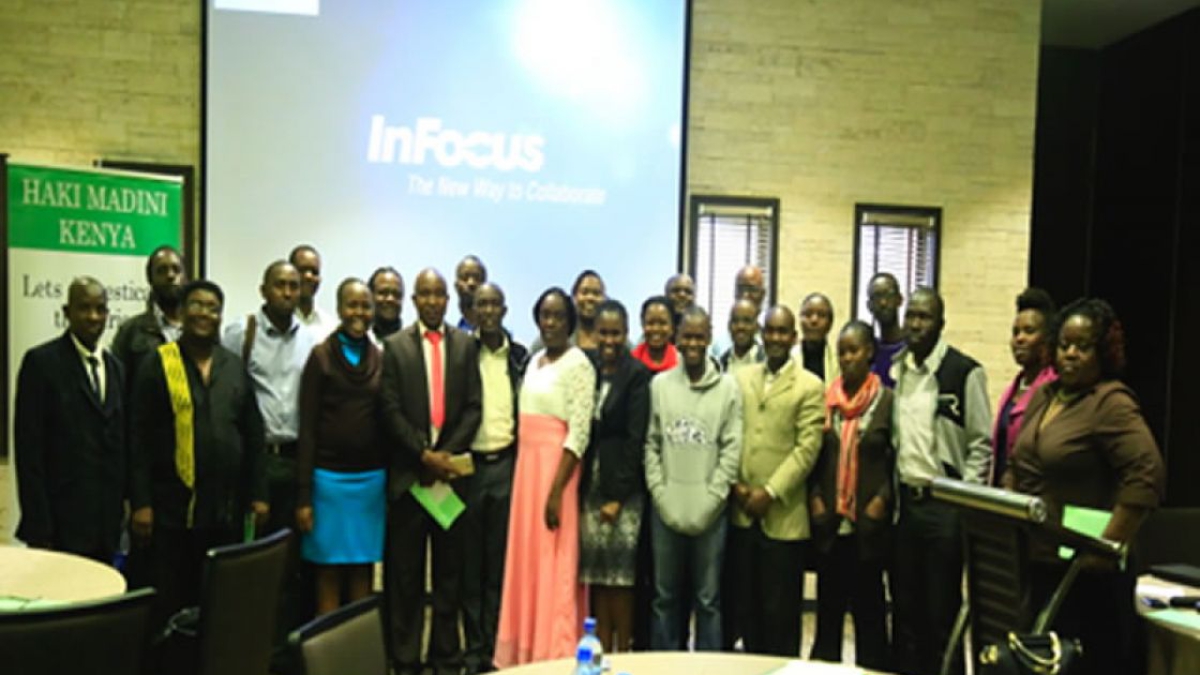Participants in a recent forum in Nairobi were in general consensus that the Africa Mining Vision is good for Kenya’s extractive sector whose implementation should create linkages with the Vision 2030, Sustainable development goals and the extractive sector legislations.
During the third week of June, 15th and 16th, the Amber Hotel in Nairobi hosted about 30 non-state actors working in the Extractive sector in Kenya. They comprised representatives from mining counties where Haki Madini Kenya Coalition operates and Civil Society Organizations (CSOs) from county and national levels working on land, human rights, tax and community organizing. The 2-day event aimed at; deepening understanding of the Africa Mining Vision (AMV) and its implementation tools; and building consensus on CSO engagement in the Kenya country Mining Vision Process.
The Africa Mining vision is one among many frameworks in the extractive sector that seek to promote good governance in the sector. Adopted in 2009 by African heads of state, the AMV is not only developed by Africans for Africa but puts long-term development at the centre of mineral extraction. (visit: http://www.africaminingvision.org/amv_resources/AMV/Africa_Mining_Vision_English.pdf). It specifically seeks to foster the following;
- A transparent sector;
- Equitable benefits from exploitation of the mineral resources; and
- Optimal exploitation of mineral resources
The AMV is organized around nine clusters, as follows:
- Mining revenue and mineral rents management
- Geological and mining information systems
- Building human and institutional capacities
- Artisanal and small-scale mining
- Mineral sector governance
- Research and development
- Environment and social issues
- Linkages and diversification
- Mobilizing mining and infrastructure investment
- In order for each country to track and monitor the implementation of the AMV, the Africa Mining Governance Framework is being developed to give in-depth guidance on the policy decisions and choices on the AMV pillars.
Notably, the implementation of the AMV is designed to take into account the varying country contexts by every government developing a Country Mining Vision (CMV). The domestication process takes a 6-stage process that includes; launching a multi-stakeholder taskforce; conducting an AMV gap analysis; AMV compliant policy; CMV implementation plan; and CMV monitoring and evaluation. Kenya, with the Ministry of Mining as the focal point, has already established a Multi-stakeholder technical working group where 2 CSO representatives sit. With the help of a Consultant, a draft gap analysis report has been prepared.
Despite the breadth of stakeholders involved in the technical working group, there were questions on how communities from mining areas can effectively participate and engage in developing the KCMV. This was responded to by a proposed stakeholder engagement process that provides for county and regional stakeholder engagement processes and a national-level multi-stakeholder forum. It was also noted that Kenya had already made significant progress in the mining sector by enacting the Mining Act, 2016 and mining regulations which among many, seeks to legalize the artisanal and small-scale mining. Hopefully, the KCMV will energize the sector to contribute to the overall development of the country including Vision 2030.
Going forward, it was important to simplify messaging of the AMV/KCMV for it to be used in all contexts. The team also committed to providing support to the CSO reps to the technical working Group. For this purpose, the team formed 6 thematic groups as follows;
- Environment,
- Land access,
- Mineral resource governance,
- Artisanal & Small Scale Mining,
- Linkages, diversification and investment
- Communication and knowledge management.
- These are in line with the areas that the KCMV has prioritized.
Haki Madini Kenya is committed to mobilising the community and CSO voice for meaningful participation in the KCMV process. Hopefully, this will contribute to a transparent sector whose benefits are exploited optimally and utilized equitably.

